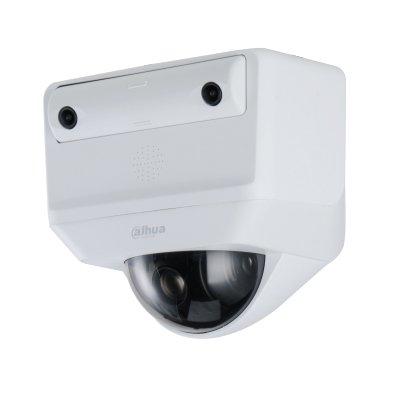Migrating to the Cloud is an inevitable and irreversible trend in video surveillance. Compared to the conventional NVR architecture, the Cloud is far more scalable, flexible and a cost-effective medium. This article argues that end user should definitely consider, if not outright begin on, moving their video surveillance to the Cloud.
According to statistics from a renowned research firm, 85 percent of businesses worldwide are already making use of cloud technology to store information. Furthermore, 67 percent of enterprise infrastructure has become cloud based in 2020, while 94 percent of the Internet workload will be processed in the Cloud by 2021.
Migration to the Cloud
It’s clear that end users have migrated a lot of their business operations to the Cloud. So, why not security and video surveillance as well? In fact, the numbers show that they are already doing this. According to Eagle Eye Network, the video surveillance-as-a-service (VSaaS) market has reached US$ 1.8 billion by 2020 and is expected to grow at an 18 percent CAGR through 2024.
The figures provide indisputable support for the argument that VSaaS is the future of video surveillance. This article strongly believes that the end user should switch to the Cloud, in the rare event that they haven’t done so already.
Remote monitoring from virtually anywhere
Video surveillance-as-a-service (VSaaS) breaks away from the traditional NVR architecture
Video surveillance-as-a-service (VSaaS) breaks away from the traditional NVR architecture. Essentially, VSaaS allows video data to be monitored from virtually anywhere. Remote management is also allowed, whereby the cameras can be configured, updated or maintained over the air, reducing the instances of site visits.
As Alen Zukich, the Chief Product Officer (CPO) of CamCloud puts it, “Once businesses make that shift to the Cloud and can access and manage all their enterprise video surveillance data from the Cloud, it’s unlikely they will go back. This is reflected in the incredibly low churn rates (cancellations) of our business customers.”
Cloud capability in COVID-19 period
The remote monitoring capability of the Cloud is especially useful during and after the COVID-19 pandemic, which has resulted in millions across the globe to work from home.
“When the pandemic forced office closures and everyone was working from home, security managers with VSaaS systems installed could still fully monitor the cameras and manage access to their buildings, without having to be on-premise in security rooms and SOCs,” said Tom Buckley, Co-Founder of Qumulex.
Benefits of the cloud infrastructure
“The adoption has increased tangibly throughout the pandemic months. We are feeling it on the number of inbound requests and converted accounts. We attribute it to the deeper realisation of the benefits of the cloud infrastructure, especially in the multiple sites surveillance case,” said Viachaslau Hrytsevich, the Chief Executive Officer (CEO) of 3dEYE.
Viachaslau Hrytsevich said, “Cloud fits perfectly into the remote work scenario, where end users and security guards work from home. Cloud is popular due to the ability to solve the shortcomings of regular local VMS and NVRs, like higher security, accessibility and reliability.”
Enhanced scalability and flexibility in an OPEX model
The recurring expense of VSaaS ensures that the end user is paying only for what they need and use"
Have what it takes to purchase NVRs, servers and other on-site equipment? This cost can be too burdensome for most users. Not a problem under VSaaS, which shifts users to an OPEX model that ensures the kind of flexibility not allowed in the NVR architecture.
As Tom Buckley explains, “The recurring expense of VSaaS ensures that the end user is paying only for what they need and use, and further enables them to expand or contract at any point, the number of devices on their network, without having to factor in additional servers, client licenses, and load balancing."
Tom adds, "It becomes very easy to add additional cameras, or to replace aging existing cameras with the latest technology from the many leading video surveillance camera vendors.”
TCO reduced to set up video surveillance
The total cost of ownership (TCO) of setting up video surveillance is significantly reduced. This is especially the case for enterprises with multiple locations.
“If you have an enterprise with dozens or hundreds of locations, an on-premise solution requires the deployment and maintenance of hardware and software, and each location. VSaaS removes that complexity and overhead,” explains Alen Zukich, adding “In a multi-location enterprise with many locations, the benefits of cloud (VSaaS) architecture are compelling.”
Accessibility to more available analytics
Needless to say, video analytics are needed by more and more users, in order to meet their business requirements. Cloud allows users to access almost an infinite number of analytics, which are otherwise too expensive and resource consuming, to be run on NVRs. Not only that, cloud allows users to choose analytics that they truly need and for the length of period that they need it for.
The Cloud provides elastic processing capability, so you always have the processing power needed"
Tom Buckley stated, “The Cloud provides elastic processing capability, so you always have the processing power needed. The user can purchase the analytics they need, for the video streams in which they need them, for the period of time they need them. In essence, renting analytic capability."
He adds, "As such, if the user wanted to deploy an analytic for a short period of time (for example, deploying a people-counting analytic for a special event), the user could purchase that capability for that time period from the analytic vendor.”
Cloud-based video analytics
Tom further said, “There are thousands of cloud-based video analytics available from a wide range of vendors. The systems integrator could handle this on behalf of their customer, bundling cloud-based analytics for the user and adding it to the monthly recurring cost, or the user could choose on their own to find and deploy analytics to meet their specific requirements.”
In the end, VSaaS allows the user to access a wide range of analytics to extend their video surveillance usability. According to Carter Maslan, Co-Founder and CEO of Camio, “VSaaS facilitates fast improvements in AI and machine learning for analytics that bring intelligence and actionable insights to video surveillance. The real-time data and communication of VSaaS moves the security industry from passive evidence collection to proactive security – a huge step toward more effective security operations.”























